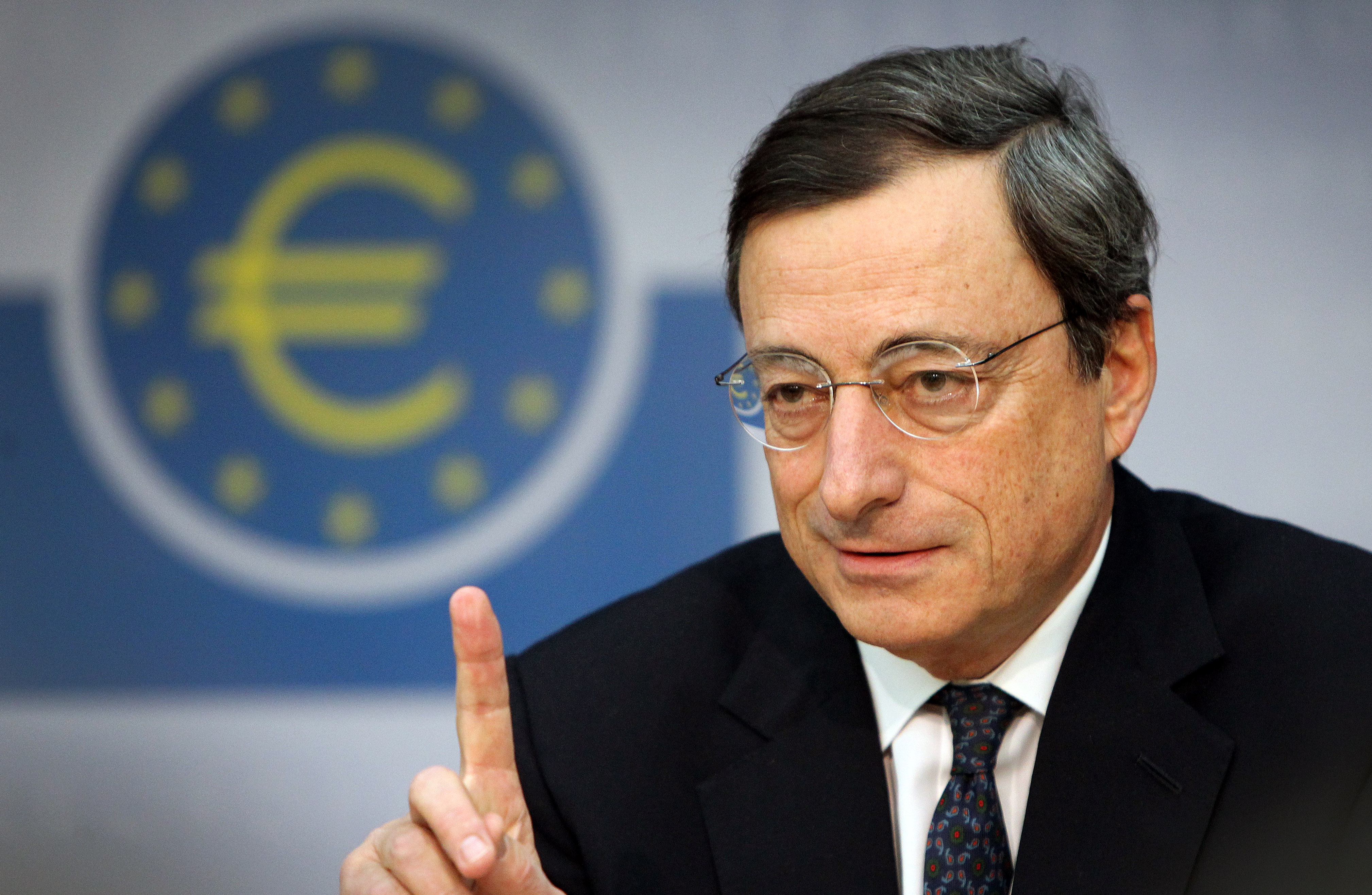ECB President Mario Draghi (pictured) wasted little time in sending the Eurodollar to a new two-year low (1.2364) on Thursday afternoon. Draghi slammed the 1.24 door shut and left the entrance to 1.23 wide open by expressing EU inflation levels are set to remain low and that the ECB is willing to further loosen monetary policy.
The mention of future stimulus came just one month after he stated that there was little else the ECB could do in terms of introducing more stimulus. In summary, his often repeated phrase the “ECB will do whatever it takes” was re-introduced to the conversation yesterday.
Draghi’s comments inevitably encouraged investors to begin pricing in ECB action in the form of QE. Many do not realise how difficult it would be for the ECB to introduce a programme that requires the purchasing of government bonds. We are talking about a 17 nation Eurozone where each government bond has a different risk classification. Getting all of the Eurozone nations – particularly Germany – and ECB policy members to collectively agree on what government bonds to purchase will be as difficult as getting David Cameron to agree with Angela Merkel on EU immigration.
Furthermore, you just have to listen to the recent tone of Mario Draghi’s comments to understand his disappointment at the lack of structural reforms being agreed to within the Eurozone. If independent governments can’t internally agree on austerity measures, are they really going to collaborate together to agree on purchasing government bonds? It is highly doubtful. Do the ECB even want to propose that they do this? This is exactly why the markets have been talking about QE being introduced in the Eurozone and just one reason why it has not yet materialised.
Advertisement
To be honest, Draghi is more than aware that the US Dollar hype train has accelerated within the past week and was probably trying to affect a weaker Eurodollar valuation while demand for the USD is strong. The EURUSD seems to have found support around 1.2384 in early morning and the reaction to the US Non-Farm Payroll (NFP) report will be pivotal to where the pair concludes the week. As long as the market reaction to the NFP is positive, Eurodollar support can be found at 1.2370 and 1.2344. It would require a really strong reaction to the US jobs report to send the EURUSD below 1.23 to conclude the week.
Elsewhere, downside movement accelerated in the Cable overnight. Prior to the end of Thursday’s European session, the GBPUSD was consolidating marginally above 1.59. By the beginning of Friday’s European session, the pair moved as low as 1.5819. This week’s UK economic data has not been alarming by any means, but it has unfortunately provided more signs of a slowdown in economic momentum, which the Bank of England (BoE) has warned about. The probability is high that the BoE Minutes release, occurring in just under a fortnight, is going to cite even stronger views on weak price pressures and slowing economic growth. Therefore, investors are pricing in a dovish BoE Minutes in advance.
As long as the market reaction to the US NFP is positive and demand for the Dollar continues to remain consistent, the GBPUSD looks to be concluding the week below 1.58 for the first time since September 2013. That would represent an incredible 1500 pip downturn in just under 3 months, mainly due to the realisation that the BoE will not raise interest rates and investors subsequently closing positions on the GBP.
Advertisement
Attention should continue to be directed on instruments that have just extended below psychological support levels. For example, since Gold surpassed its own psychological $1180 support level on Monday afternoon, the commodity has tumbled towards $1131 on Friday morning. Before the US NFP, Gold buyers have pushed the metal back up to $1142 at the time of writing. If Gold’s appreciation is to continue, resistance can be found at $1145 and $1150.
However, US economic optimism has reached new levels in recent days following the Fed concluding QE, GDP coming in above expectations and Initial Jobless Claims continuing to challenge 15-year lows. This has all happened within a week, meaning a strong NFP today has not necessarily been priced into the Dollar. Therefore, in a few hours, Gold might still drop below $1100 for the first time since March 2010.
The Aussie is another example of a pair experiencing sudden selling pressure after extending below psychological support. Since extending below 0.8642 on Wednesday afternoon, the pair moved as low as 0.8540. It has remained no secret throughout 2014 that the Reserve Bank of Australia (RBA) has repeatedly asked for a weaker currency to help the Australian economy refocus away from reliance on mining/export investment and towards domestic consumption. As far back as early 2014, many economists predicted the pair concluding the year at around 0.85. This is now achievable, but right collaboration between AUD weakness and increased USD demand would be required.
In regards to what pair might be next to follow a similar pattern to the Aussie and Gold, the Kiwi just extended below 0.77.
Advertisement
*Ahmad is chief market analyst at FXTM
Add a comment







